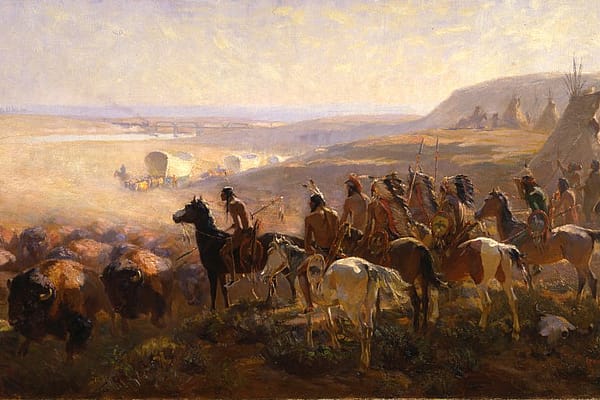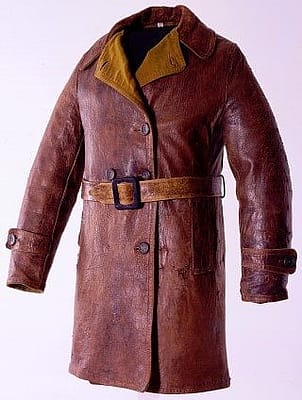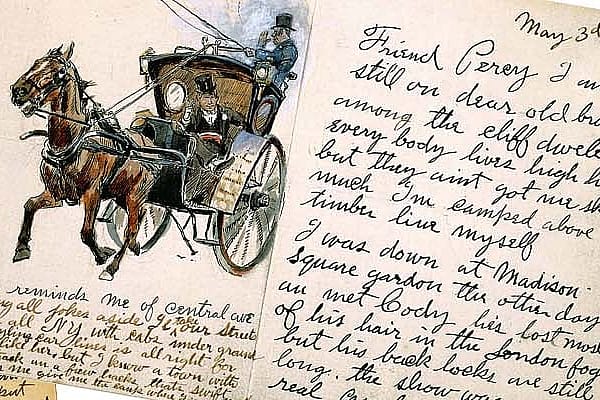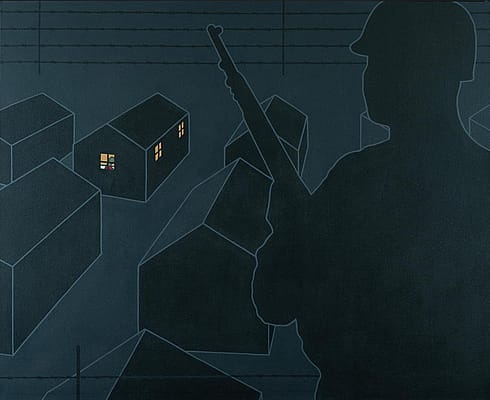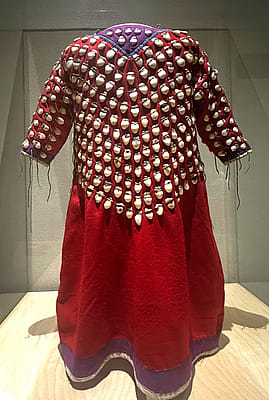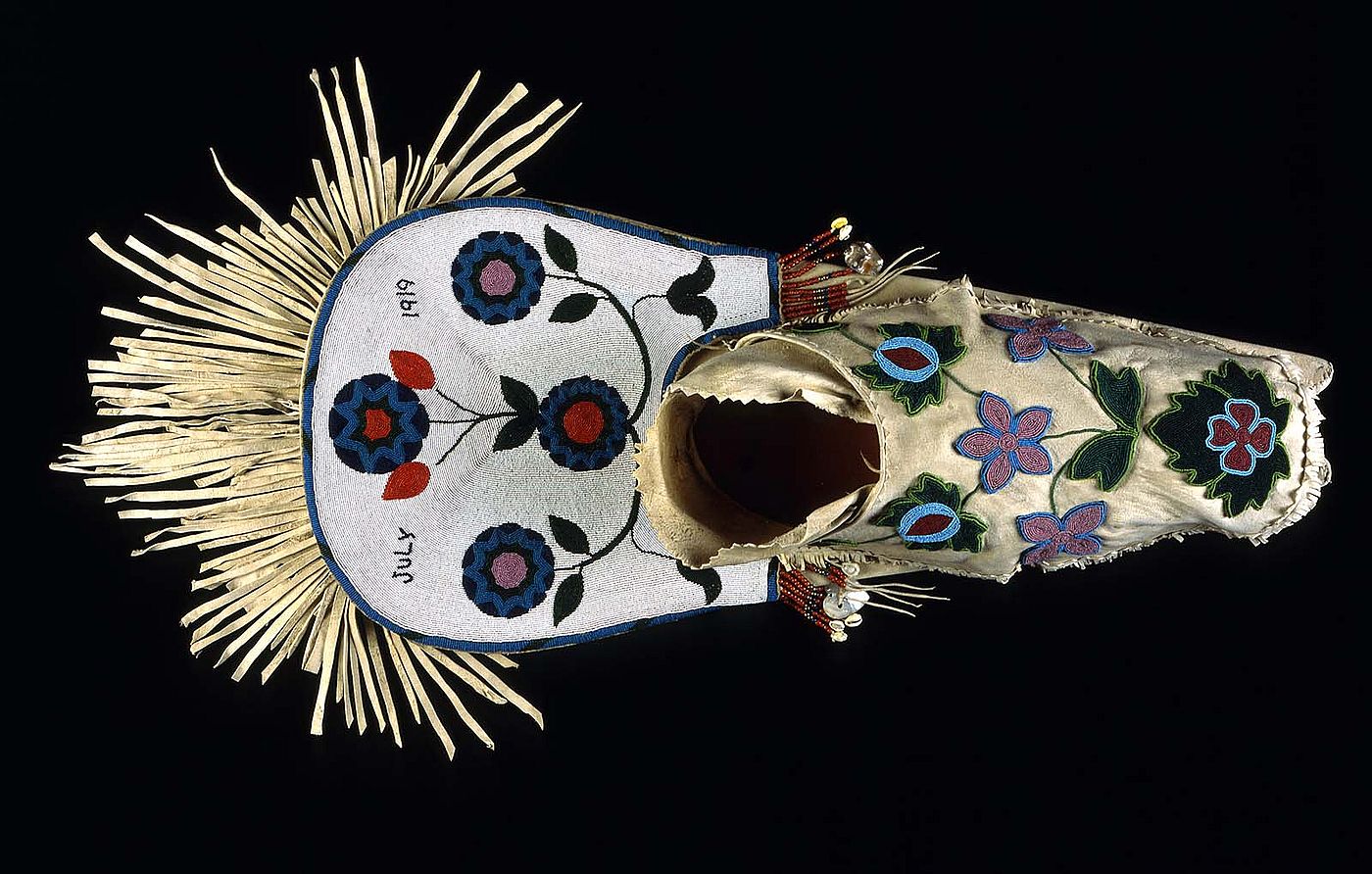
Plains Indian Cradles
This article was originally published in a 1977 newsletter and written by Leo A. Platteter.
The making of a beautifully decorated cradle was one of the most highly esteemed crafts of Plains Indian women. Because the baby usually spent the first year of its life in some type of cradle, they were lavishly made as true labors of love.
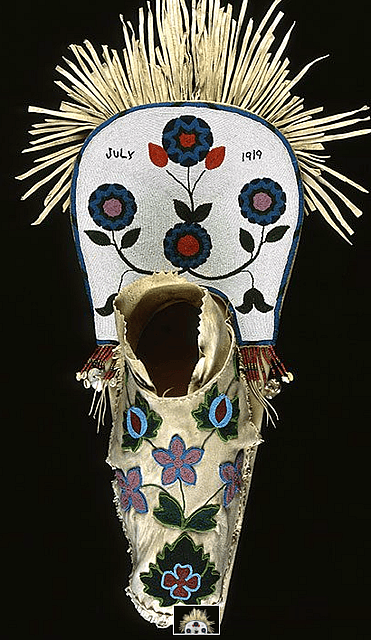
Several distinctive styles of cradles existed on the Plains, but all served as a means of protection, a sleeping place, and a method of transportation. Available materials and the surrounding environment account in part for the different cradle designs.
Board cradles, with the framework in the shape of an inverted U at the top and tapering toward the bottom, were used by the Nez Perce, Crow, Blackfeet, Shoshoni, Northern Ute, and the Kutenai. With the exception of those in the Crow style, these cradles were basically ovoid, and the baby was laced into a hooded skin pocket with a vertical opening. Twine woven wicker hoods were used on Northern Ute cradles, rather than a skin hood. Crow board cradles were more distinctive. They were oblong in shape, and had three pairs of horizontal body bands to hold the infant securely.
Lattice cradles, the framework of which consisted of two narrow flat boards tapering toward the bottom in the shape of a modified V, were used by the Sioux, Cheyenne, Arapaho, Kiowa, and Comanche. Many of the cradle cases were heavily decorated on the outside with quill or beadwork. The vertical opening was held shut with a series of strings which were tied rather than laced.
A cradle was made as comfortable as possible for the infant, by means of padding bedding and a pillow. The bedding consisted of soft animal skins, downy feathers from birds, small blankets, or trade cloths. Juniper, shredded cottonwood bast, cattail down, soft moss, and scented herbs were used as absorbent, disposable diapers.
The Arapaho packed thoroughly dried, and finely powdered buffalo or horse manure between baby’s legs to serve as a diaper and prevent chafing. Cradles were cleaned and aired as frequently as the infant’s “diapers” were changed.
Before the birth of the baby, it was the responsibility of the expectant mother, or one of the grandmothers to, to make a small ornamented amulet in which the infant’s umbilical cord would be preserved. The amulet was often hung on the cradle, or around the infant’s neck, to protect the baby against evil spirits, and to ensure long life.
Exactly when cradles came into use on the Plains is uncertain. Animal skins, buffalo robes, and portions of old tipi covers probably served as the earliest baby carriers. However, in historical terms, the cradle may be a relatively recent innovation, and a number of tribes seem to have made little or no use of cradles in the early days.
Since words and names varied from tribe to tribe according to individual dialects, there was no single, universal Indian word for either “cradle” or “baby.”
Rich artistic embellished cradles remind us of the Plains Indians’ love of their children, their families, and their freedom of movement—before their way of life became obscured by the smoke and dust that lingered over numerous battlefields.
Written By
Michaela Jones
Michaela, a Cody, Wyoming native, is the Centennial Media Intern at the Center of the West for the summer of 2017. She recently graduated from the University of Wyoming with a bachelor's degree in English and minors in professional writing and psychology. She's interested in writing for digital spaces, producing social media content, and learning about technology's impact on communication. In her spare time, she enjoys reading non-fiction, exploring the mountainous Wyoming regions, and spending time with family and friends.

